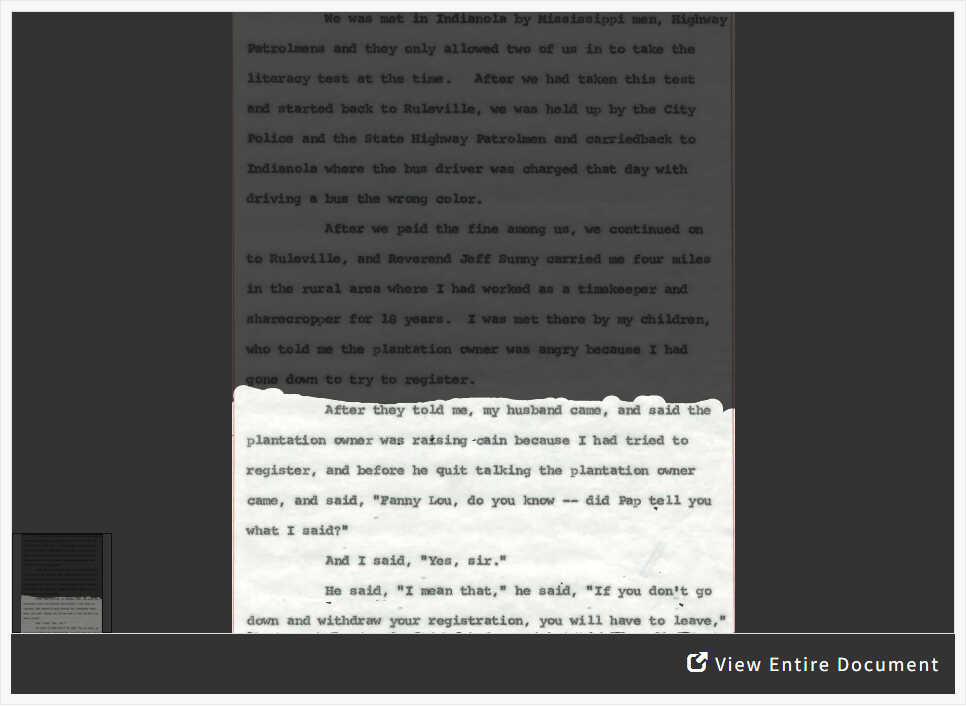In this activity, students will analyze a portion of Fannie Lou Hamer's testimony at the 1964 Democratic National Convention about registering to vote in Mississippi in 1962. They will answer questions to understand the specific challenges Black Americans faced, and the motivations behind the Civil Rights Movement.
Suggested Teaching Instructions
Use this activity while teaching about voter discrimination and the Civil Rights Movement of the 1960s. For grades 5-8. Approximate time needed is 45 minutes.
Students can complete the activity individually or in pairs, either in class or independently outside of class. Alternatively, complete the analysis portion of the activity as class, and assign the final task to be done individually.
Please note that a quote from Hamer and the featured document in this activity use the term "Negro/Negroes" to refer to African American people, which was commonly accepted in that era, but is outdated and and inappropriate today. Also note that Hamer's full testimony includes racist language and depictions of racial violence.Before beginning the activity, share the following information with students:
In 1962, African Americans made up 45% of the population of Mississippi. However only 5% were registered to vote, the lowest rate in the United States. Racist obstacles like literacy tests and poll taxes, as well as intimidation and violence, prevented Black Americans from registering. African Americans could have actually controlled local politics had they been voting, since they made up the majority in many Mississippi counties. Therefore registering African Americans to vote was one of the goals of the Civil Rights Movement in Mississippi.
Conduct a brief class discussion by asking students why voting is important and how voting could have changed life for African Americans in Mississippi in 1962. Responses could include electing officials who believe in the same ideas as you, who will make laws that don't discriminate against you, and who will enforce the laws fairly for all people.
Ask students to begin the activity by reading the background information on Fannie Lou Hamer and the highlighted portion of the document, where Hamer described her experience registering to vote in Mississippi in 1962. Students should then answer the questions that follow either through class discussion or written response.
When they have finished answering the questions, they should click on "When You're Done" to complete the final task:
Fannie Lou Hamer gave this testimony during the 1964 Democratic National Convention. When it was broadcast on major TV networks, she became a national spokesperson for civil rights.
Hamer ended her testimony with the following question: "I question America, is this America, the land of the free and the home of the brave where we have to sleep with our telephones off the hooks because our lives be threatened daily because we want to live as decent human beings, in America?"
In two sentences, explain why you think Hamer chose to use these contrasting images to depict what African Americans were facing: "the land of the free and the home of the brave" versus "our telephones off the hooks because our lives be threatened daily."
As a class, discuss students' responses. Then brainstorm what some of the specific goals of the Civil Rights Movement in Mississippi might have been based on what they've learned.





